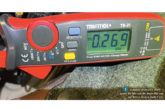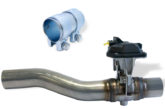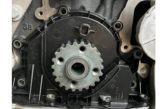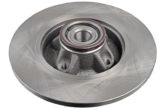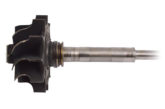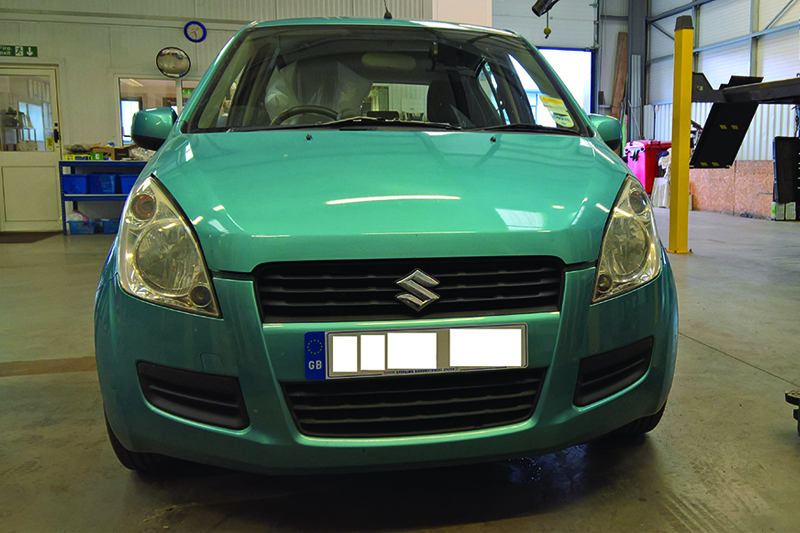
A full clutch replacement guide for a Suzuki Splash 1.2l four-cylinder 2008 from the experts at Schaeffler Automotive Aftermarket.
In this month’s article, the LuK technical experts are replacing the clutch in a 2008 Suzuki Splash fitted with a 1.2L, four-cylinder, petrol engine.
The customer’s complaint was that the clutch pedal was very heavy in operation, which was easily confirmed. The cable and pedal linkage were examined for correct operation and shown to be correct. Clutch replacement was advised to the customer and authorised. This is an easy repair for any workshop, with the equipment required being a vehicle lift, an engine support and a clutch alignment tool.
The Suzuki Splash was a joint project between Suzuki and Opel, aimed at the city car market. Suzuki named it the Splash and Opel branded it the Agila. In the UK, we know it as the Vauxhall Agila.
Launched in 2008, it was available with a 1.0L three-cylinder, 1.2L four-cylinder petrol engine or a 1.3L four-cylinder diesel engine, supplied by Fiat. Production ceased at the end of 2014 and Suzuki replaced it with the Celerio in the summer of 2015.
For this repair, we used a two-post vehicle ramp. With the vehicle placed on the ramp, open the bonnet (see below), disconnect and remove the battery, disconnect the wiring loom retaining clips from the battery tray, slide the coolant header tank out of its mounting bracket and place in an upright position at the front of the engine.
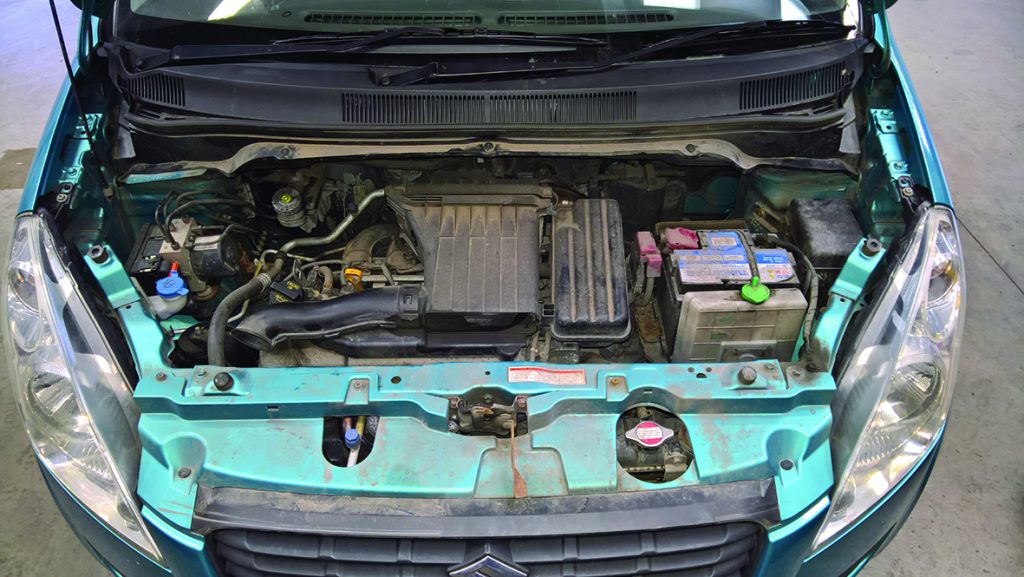
Remove the battery tray retaining bolts and stow the battery tray on the N/S of the engine bay as the engine control unit is attached to the battery tray with security tamper proof bolts (see below).
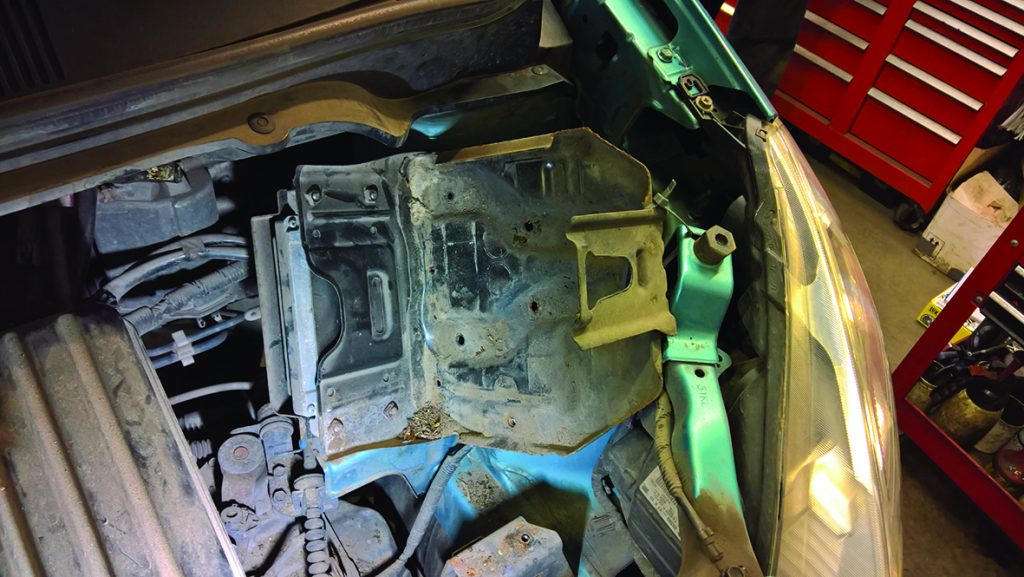
This now gives access to the top of the gearbox, so disconnect the reverse light switch multi- plug, release the clutch cable and slide out of the mounting bracket and then disconnect the gear change cables from the gear linkage (see below), slide the outer cables out of the mounting bracket, unbolt the earth lead and now remove the upper bell housing bolts.
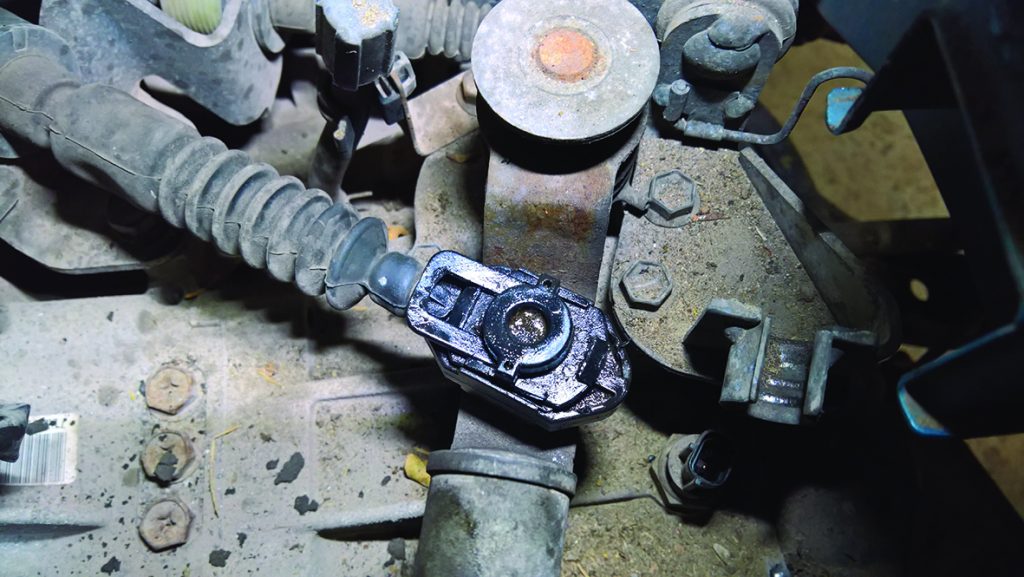
With the vehicle still on the floor, slacken both front hub nuts, raise the vehicle to waist height, and remove both front wheels, both ball joint pinch bolts and release the ball joints from the hub assemblies by lowering the bottom suspension arms (see below). Once disconnected, ease the CV joint out of the hub ready for driveshaft removal.
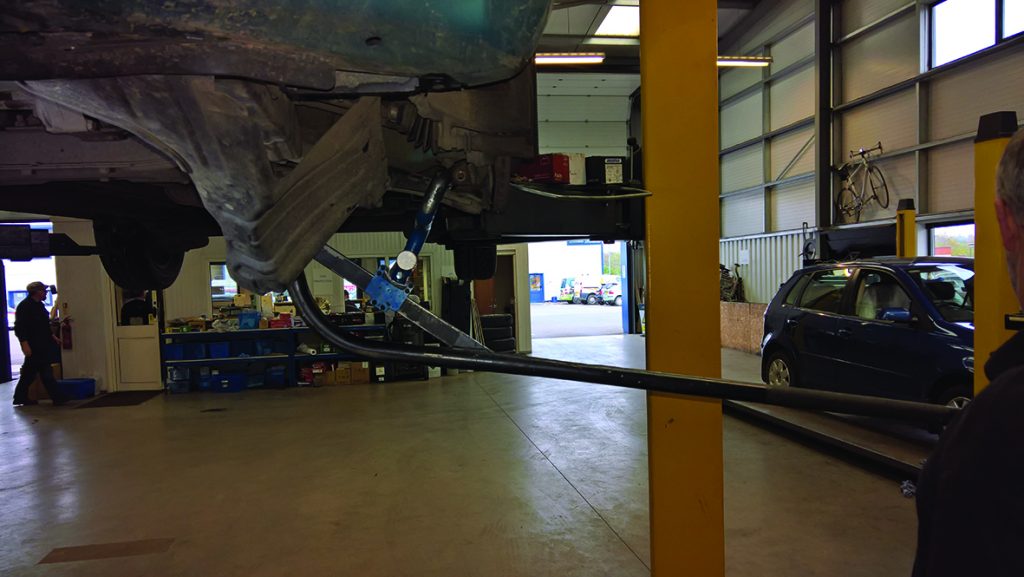
Raise the ramp to gain access to the underside, drain the gearbox oil and then remove both driveshafts by levering the inner joint out of the differential, as these are retained by ‘snap rings’. Carefully remove the driveshafts and store in a safe location.
We now need to disconnect the rear gearbox mounting, which will remain in its location when released. Remove the three bolts that attach the mounting to the front sub-frame, disconnect the rubber mounting bracket from the engine mounting bracket and then detach the engine bracket from the engine which now gives access to the starter motor bolt and bell housing bolt.
Remove the starter motor bolt and then the lower bell housing bolts, but do not remove the two bell housing bolts positioned at three o’clock and nine o’clock. Support the engine by using either an engine beam or an underside engine support, support the weight of the engine and gearbox, remove the front gearbox mounting from the gearbox (see below) and remove the plastic under-shield from the near side front and then remove the near side front brace bar.
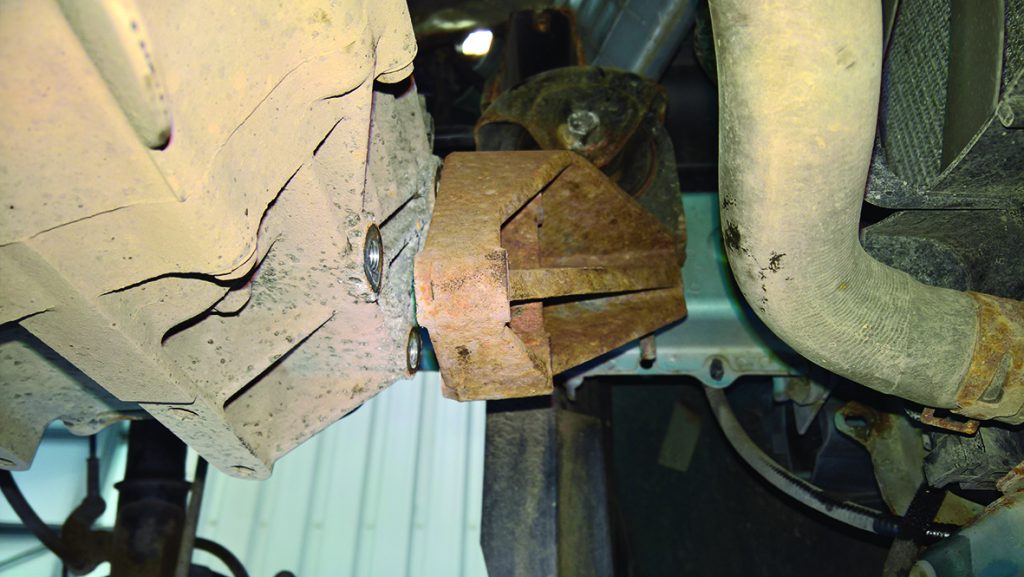
Lower the engine and gearbox on the support device, using a gearbox jack, support the weight of the gearbox and remove the final two bell housing bolts located at three o’clock and nine o’clock, and ease the gearbox out and lower. When free, this can then be lifted off the jack and placed in a safe area.
Remove the clutch assembly from the flywheel and inspect the flywheel for heat cracks and surface damage – in this instance the flywheel was in good condition. Now clean the flywheel surface with emery cloth to remove the glaze and then clean with brake and clutch dust cleaner so as not to contaminate the new clutch.
At this point, check the spigot bearing for play and smooth operation (see below).

Remove the release bearing from the release mechanism, clean out the gearbox bell-housing with brake and clutch dust cleaner and inspect all moving components on the release system for wear, correct alignment and correct and full operation. Now lubricate the inside of the new release bearing with a small amount of high melting point grease and locate the release bearing onto the release system (see below).

Before fitting the clutch plate, lubricate the gearbox input shaft splines with a light smear of high melting point grease. Now locate the new clutch plate onto the input shaft, ensuring spline fitment is correct which
will also evenly distribute the grease, but be sure to wipe off any excess.
Now mount the new clutch on the flywheel, ensuring that the clutch plate is fitted correctly, with ‘Gearbox Side’ or ‘Getriebe Seite’ facing the gearbox, using a clutch alignment tool. Ensure the clutch plate is aligned correctly, align the cover onto the flywheel dowels. Tighten in an even sequence, torque to the manufacturer’s specification and remove the clutch alignment tool (see below).
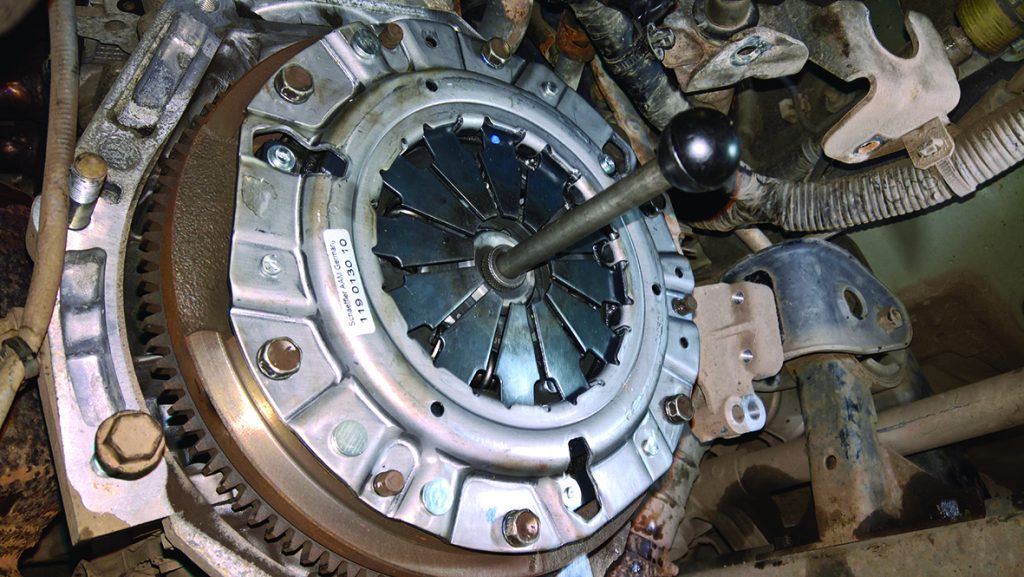
Refit the gearbox in reverse order of removal and refill the gearbox with the correct grade and quantity of oil. When adjusting the clutch cable always remember to leave a little free play at the top of the pedal to ensure a full release. Once the repair is complete, carry out a road test to ensure the clutch and gear change operation are correct and all electrical items have been reset after connecting the battery.

